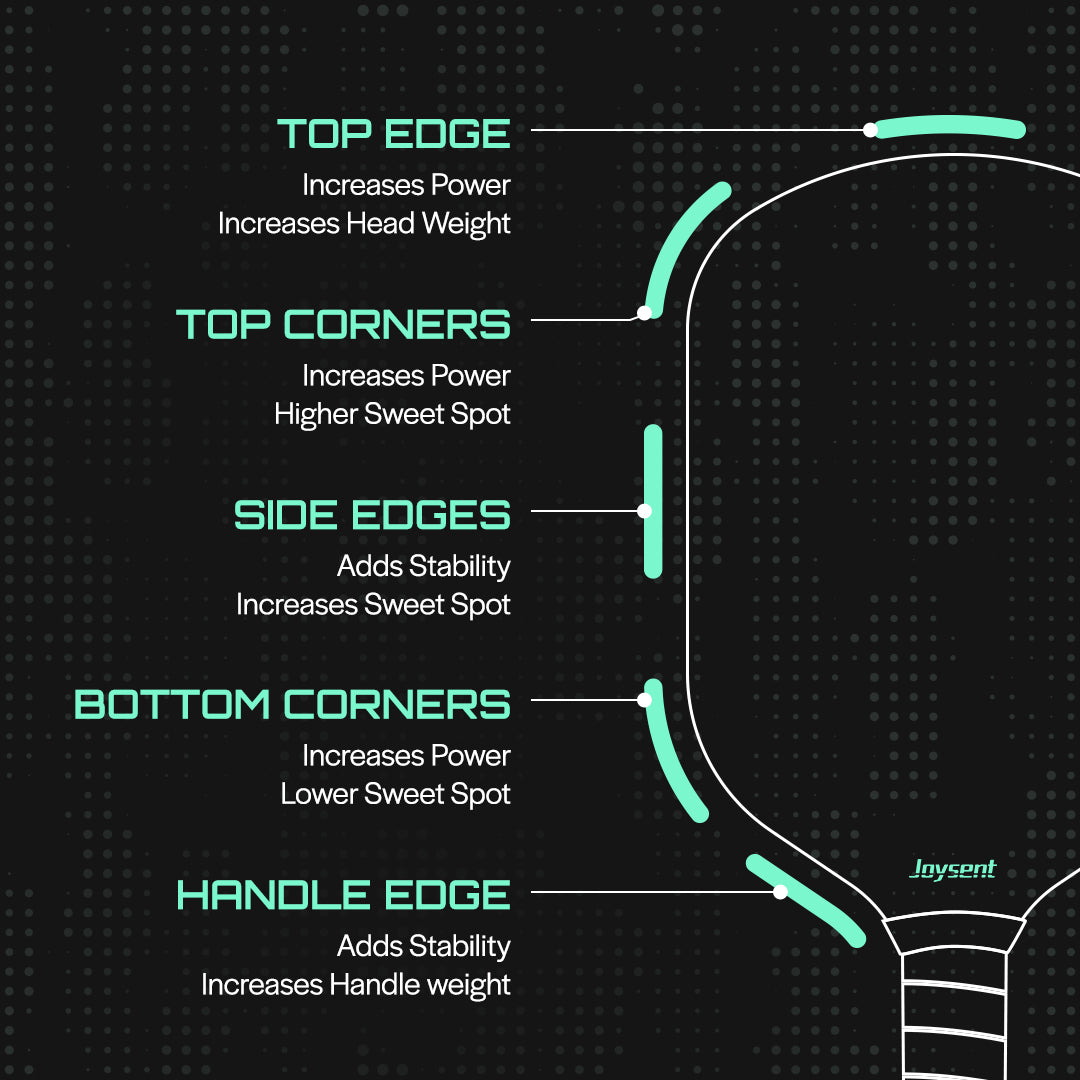
Customizing Paddle Performance with Lead Tape: A Guide to Strategic Weight Placement
In the fast-evolving world of pickleball, even small tweaks can make a big difference. One of the most effective — and underrated — ways to customize your paddle’s performance is by strategically applying lead tape, also known as weight strips. Whether you're chasing more power, better control, or an optimized sweet spot, where you place the lead tape can significantly impact how your paddle feels and performs.
Let’s explore how adding weight to different areas of your paddle can help you dial in your perfect setup.
🎯 Top Edge: Power Boost & Head-Heavy Balance
Placing lead tape along the top edge of your paddle increases its head weight, creating a more head-heavy balance. This shift enhances swing momentum, allowing you to generate more power — especially on serves, drives, and smashes.
Best for: Power players who want extra pop and depth on their shots.
Trade-off: Slightly reduced maneuverability due to increased swing weight.
🎯 Top Corners: Elevated Sweet Spot & Extra Power
Applying weight to the top corners of your paddle does two things:
-
Raises the sweet spot, which is great for elongated or hybrid-shaped paddles.
-
Adds power by enhancing the mass behind each shot.
Best for: Players who tend to hit higher on the face or want to correct for shots landing too high on the paddle.
Pro tip: Combining this with side edge weighting creates a powerful “upper halo” effect.
🎯 Side Edges: Stability & Forgiveness
Adding lead tape to the side edges helps improve lateral stability. This reduces unwanted twisting on off-center hits, making your paddle more forgiving. It also subtly expands the sweet spot, giving you a larger margin for error.
Best for: Players who value consistency, stability, and defensive control.
Ideal for: Doubles players or anyone struggling with mishits near the edge.
🎯 Bottom Corners: Balanced Power & Lower Sweet Spot
Weighting the bottom corners increases mass near the throat of the paddle, which:
-
Adds power to lower hits.
-
Helps shift the sweet spot downward — useful for players who hit lower on the paddle face.
Best for: Players using a more compact, wrist-driven swing style or who prefer a neutral balance with power.
Bonus: Helps balance a paddle that already has top edge tape applied.
🎯 Handle Edge: Counterbalance & Control
Placing weight near the handle edge increases the handle weight, effectively counterbalancing any weight added to the head. This provides:
-
Improved paddle stability.
-
Faster maneuverability, especially at the net.
-
Enhanced control and touch for resets and dinks.
Best for: Players looking to reduce swing fatigue or sharpen control without sacrificing too much power.
🛠️ How to Apply Lead Tape Properly
-
Use pre-cut lead tape strips or cut your own from a roll.
-
Always start with small amounts (e.g., 1–2 grams per location), and test the feel before adding more.
-
Stick the tape securely to the edge guard or under it (if possible) for a cleaner look.
-
Consider using a precision scale to maintain legal weight limits (max 8.5 oz / ~240g for most paddles).
🧪 Experiment & Find Your Feel
No two players are the same — and no paddle should be either. That’s the beauty of lead tape. It lets you fine-tune your paddle for your unique playing style, whether that means turning up the heat on your drives or gaining that buttery-smooth reset touch.
Start with one area, test it out, and make adjustments over time. A few grams here and there could be the edge you need to outplay your opponents.
🖤 Joysent Tip
At Joysent, we design our paddles with performance and customization in mind. Many of our models are thermoformed with reinforced edges, offering excellent structural integrity — making them a perfect match for weight tuning.
Whether you're playing with our Halo X5 or another Joysent paddle, don’t hesitate to experiment with lead tape to truly make the paddle your own.








